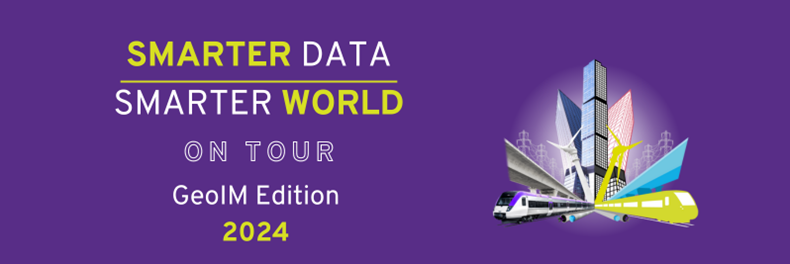1Spatial to Host Conference on Geospatial Information Management
As a Founding Supporter of the Information Management Initiative, 1Spatial will bring together Geospatial Information Management (GeoIM) experts next week to share best-practice of how the geospatial approach can benefit major infrastructure projects
What is the new Information Management Initiative and why is it needed?
The Information Management Initiative (IMI) is the industry-led and Government-supported initiative from the Construction Leadership Council and nima (previously the UK BIM Alliance).
The UK BIM Alliance was influential in the adoption of Building Information Modelling (BIM) to drive digital transformation in the infrastructure sector. BIM enables organisations to collaborate more effectively on construction projects and gain faster access to accurate information during design and build, which reduces costs due to time delays and material wastage. By 2020, 73% of organisations in the UK construction industry had adopted BIM practices.

Today BIM is just part of a growing information management challenge. Therefore, to reflect the evolution of the sector and digital transformation, the new Information Management Initiative will refresh existing guidance to further transform the digital integration of data and information across the whole lifecycle of the built and managed environment, enhancing collaboration, efficiency, safety, and sustainability to meet the evolving needs of society, business, and the environment.
Geospatial Information Management (GeoIM) for Infrastructure
1Spatial shares a similar vision to nima, recognising the environmental, social, and business benefits and competitive advantages to be gained from the adoption of data and information management best practices, particularly where location and geographic features are used as the context.
Generating geospatial awareness by combining geospatial information with non-geospatial information creates new relationships that wouldn’t otherwise exist which enhances insight for better decision making and collaboration on any infrastructure programme. This makes sense as over 60% of infrastructure project information has a geospatial element.
The geospatial information expertise and software provided by 1Spatial is a critical component for major infrastructure programmes such as the National Underground Asset Register (NUAR) as well as the Environment Agency’s Flood Risk Management infrastructure programmes.
Geospatial Information Management for Infrastructure Conference (4th December)
1Spatial, as a Founding Supporter of the IMI, will be hosting a Geospatial Information Management for Infrastructure conference on 4th December at the Royal Institute of British Architects (RIBA), London. The aim of the conference is for further collaboration and sharing best practice across multiple infrastructure organisations including water, transport, energy, and flood risk management, for enabling the digital integration of quality data and information.
nima will be supporting this conference with the opening keynote provided by nima’s chair, Dr Anne Kemp, with an impressive speaker line-up from organisations including, Environment Agency, Network Rail, Digital Twins Skills Academy, Shell, Arup, Skanska, Dalfour Maclaren, PLACE Trust, and Jacobs.
Matt White, Head of Built Environment at 1Spatial:
“This exciting event will bring together Information Management (IM) and Geospatial Information Management (GeoIM) professionals responsible for planning, designing, building, and operating infrastructure across transport, water, wastewater, energy, telecommunications, and flood risk management. Together, we will explore how IM and GeoIM are achieving positive outcomes for transforming infrastructure performance. The conference will also highlight the launch of the new IMI and its implementation roadmap.”

At time of publishing places for this event may no longer available. Please contact marketing@1spatial.com to be placed on the reserve list or to register for a copy of the White Paper: “Geospatial Information Management (GeoIM) Best Practice” to be produced after the Conference.


